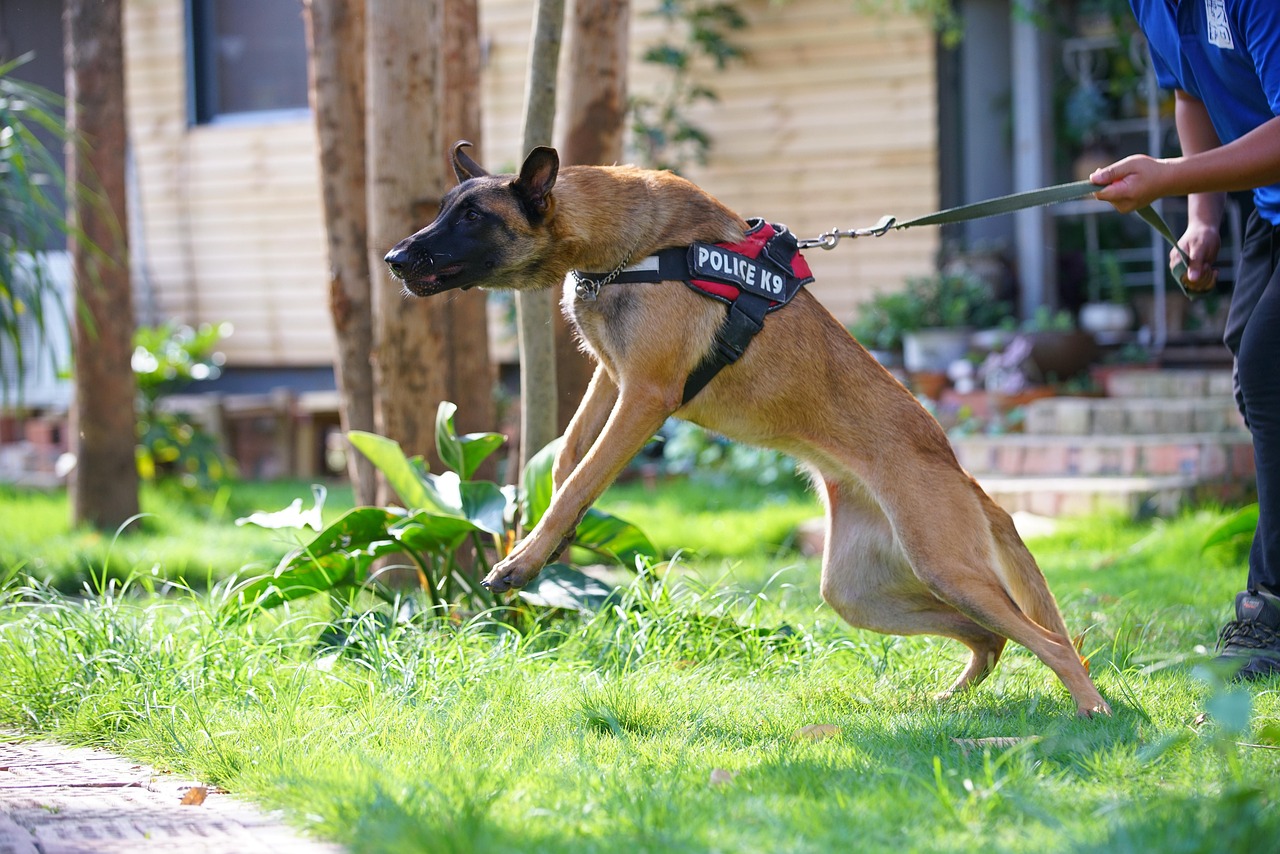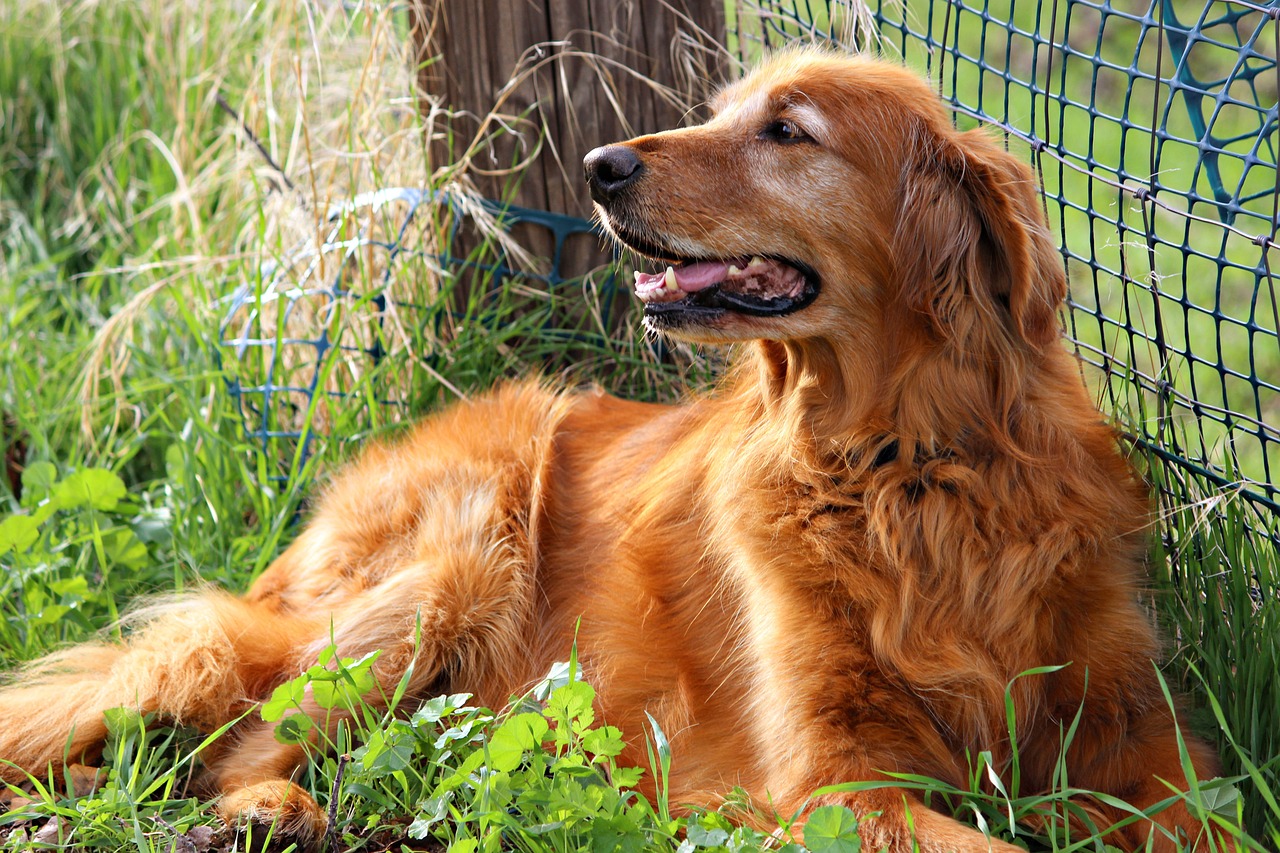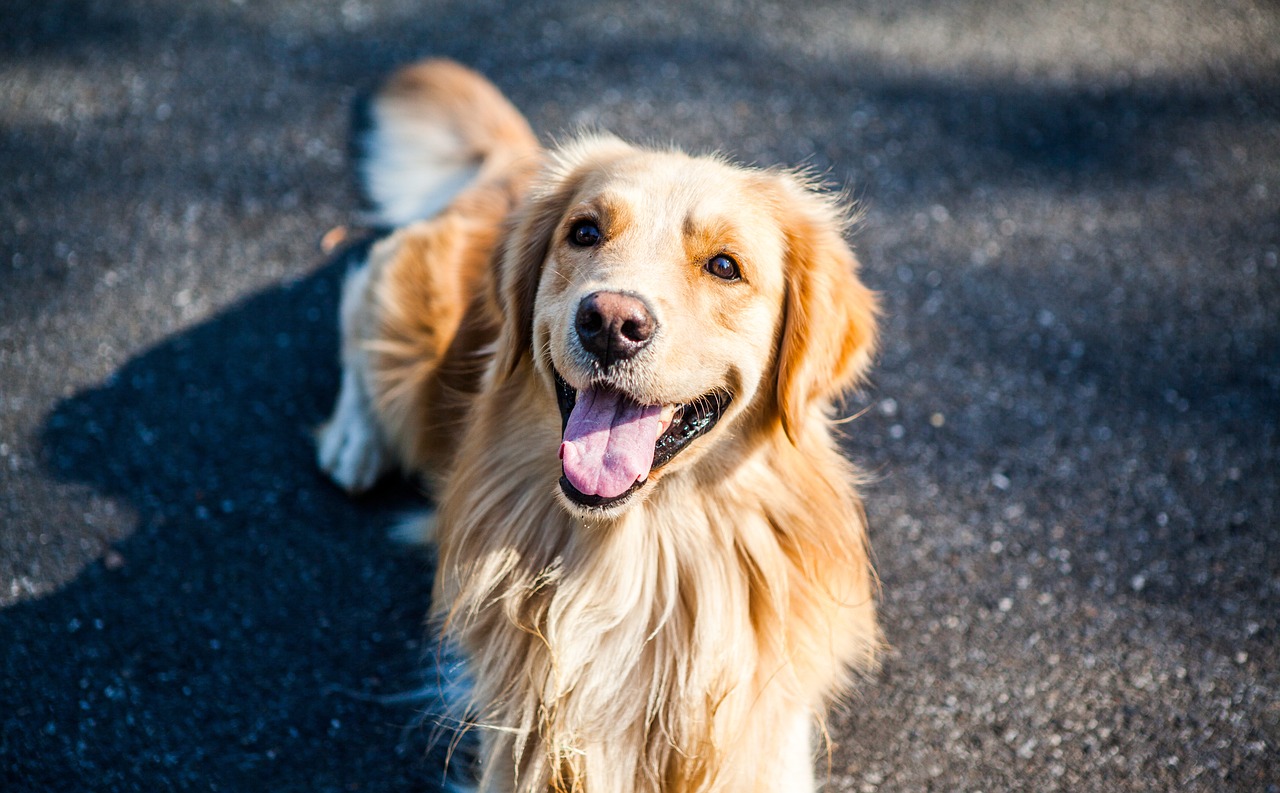So you are searching for a dog to protect you and your family, and you think of a Golden Retriever. Well, you are not the only one! Due to their strong sense of loyalty, huge size, and high intelligence, many pet owners come to us asking if they can train their Goldies into the family’s protectors.
Are Golden Retrievers good guard dogs, though? Is the responsibility too much for these happy-go-lucky biggies? Our experts will answer your question right away!
Defining the Term “Guard Dog”

Before addressing the question “are Golden Retrievers good guard dogs?,” we should first understand this term. While this might sound surprising to you, “guard dogs” aren’t just canine friends who protect their owners and homes. They are working dogs specifically trained to carry out special tasks, such as detecting scent, searching, rescuing, controlling crowd, and protecting important assets.
According to professional dog trainers, there are more than one type of guard dogs:
- Alarm dogs: Selected from breeds with loud and deep bark, these dogs are trained to bark upon detecting unfamiliar presence. Their responsibility is to warn their owners of potential threats and ward off intruders through noise. While seeming intimidating, alarm dogs are not trained to attack without commands.
- Sentry dogs: A step up from alarm dogs, they are what people would imagine when it comes to “guard dogs.” These dogs are trained to protect properties, such as warehouses or shipyards. They can attack any stranger approaching without commands.
- Attack dogs: The most ferocious type of guard dogs, trained to attack or even kill on command. They are not meant to be kept as pets – rather, you will find these dogs in military or law enforcement settings.
Let’s remind you once again that most guard dogs are animals on duty, not pets. Only selected types of dogs are suitable for training, and after the training process, they become even more territorial and dominant. Such traits make them unsuitable for normal households.
Are Golden Retrievers Good Guard Dogs?

Now that we’ve established what guard dogs are, let’s examine whether Golden Retrievers fit the bill. At first glance, the friendly and outgoing nature of Goldens seems at odds with the stern, intimidating image we associate with guard dogs. Let’s explore the characteristics that make Golden Retrievers less suitable for traditional guard dog roles:
- Innate friendliness: Golden Retrievers are famous for their warm, welcoming personalities. They’re more likely to greet a stranger with enthusiasm than suspicion.
- Low aggression levels: Goldens typically have a gentle temperament and low aggression. They don’t naturally view unfamiliar people as threats, a key trait for effective guard dogs.
- People-pleasing nature: These dogs thrive on human interaction, even with strangers. This eagerness to befriend everyone can compromise their effectiveness as deterrents.
- Gentle disposition: While their sweet nature makes them excellent family companions, it doesn’t lend itself to intimidating potential intruders.
- Limited territorial instincts: Unlike many breeds commonly used as guard dogs, Goldens don’t typically exhibit strong territorial behaviors.
However, it’s not all discouraging news for Golden Retriever owners concerned about home security. While they may not fit the traditional guard dog mold, Goldens can still contribute to family safety in their own unique ways.
Golden Retrievers as Protection Dogs: A Different Approach
While Golden Retrievers may not excel as conventional guard dogs, they can shine in the role of protection dogs. But what’s the difference? Protection dogs, unlike highly trained guard dogs, are primarily family pets with some protective instincts. They don’t undergo specialized security training but can still defend their families if necessary.
Here are some traits that make Golden Retrievers well-suited as protection dogs:
- Impressive size: Adult Golden Retrievers can weigh up to 75 pounds, giving them a physical presence that can be deterring to potential intruders.
- High trainability: Thanks to their eager-to-please nature, Goldens are highly trainable. With consistent, positive reinforcement, they can learn to perform various tasks, including basic protective behaviors.
- Remarkable intelligence: Golden Retrievers are renowned for their smarts, ranking among the most intelligent dog breeds. This cognitive ability allows them to quickly pick up on unusual situations and alert their families.
- Natural alertness: While not aggressive, Goldens are generally observant and will often bark to announce the presence of visitors or unusual activities.
- Strong family bonds: Golden Retrievers form deep, loyal connections with their families. This attachment can naturally translate into a desire to protect their loved ones.
Training Your Golden Retriever for Protection: A Step-by-Step Guide

If you’re interested in enhancing your Golden Retriever’s protective instincts, consider this training approach:
Step 1: Master Basic Obedience
Ensure your Golden has a solid grasp of fundamental commands like “sit,” “stay,” “come,” and “leave it.” This foundational training establishes you as the pack leader and paves the way for more advanced instruction.
Step 2: Introduce the “Speak” Command
Teach your dog to bark on command using a cue word like “speak” or “alert.” Reward them generously when they bark in response to the command.
Step 3: Teach the “Quiet” Command
Balance is crucial. Train your dog to stop barking when given the “quiet” command to prevent excessive noise and maintain control over their vocalizations.
Step 4: Implement Scenario-Based
Training Create mock situations where a friend (unfamiliar to your dog) approaches your home. Reward your Golden for alerting you with a bark, reinforcing their role as a watchful family member.
Step 5: Encourage Property Awareness
During walks, allow your dog to explore and sniff around the perimeter of your property. This helps develop a sense of territory and familiarity with their surroundings.
Step 6: Practice Controlled Socialization
While maintaining your Golden’s friendly nature, teach them to exercise caution around strangers. Allow supervised interactions with new people to strike a balance between approachability and watchfulness.
Step 7: Incorporate the “Watch” Command
Train your dog to focus their attention on specific individuals or areas on command. This skill can be valuable in potentially concerning situations.
Step 8: Develop Sound Discrimination
Help your Golden distinguish between familiar sounds (like family members’ vehicles) and unfamiliar noises, encouraging appropriate responses to each.
Step 9: Utilize Positive Reinforcement Consistently
Always reward desired behaviors with treats, praise, or playtime. Avoid punishing your dog for not exhibiting protective behaviors, as this can lead to confusion or anxiety.
Remember, the goal isn’t to transform your friendly Golden into an aggressive guard dog. Instead, focus on enhancing their natural protective instincts while maintaining their loving, gentle nature.
Read more >> How Much Exercise Does a Golden Retriever Need
Conclusion: Golden Retrievers as Unique Protectors
Are Golden Retrievers good guard dogs? While they may not fit the traditional mold of guard dogs, they bring their own special blend of qualities to the table when it comes to family protection. Their size, intelligence, and trainability make them capable of learning protective behaviors, while their friendly nature ensures they remain the loving family companions we adore.
The key to success lies in working with your Golden’s natural instincts rather than against them. By enhancing their alertness and teaching them to communicate potential concerns, you can create a “golden guardian” that balances approachability with watchfulness.

With years of expertise as a pet care writer, I’ve acquired a specific interest in Golden Retrievers, who are one of the most popular and beloved dog breeds. Although I do not own a Golden Retriever, my extensive study and talks with pet professionals enable me to offer useful and reliable articles for dog owners. My work on this website covers important areas such as diet, grooming, and training for Golden Retrievers. My goal is to provide readers with the information they need to keep their dogs healthy and happy.


